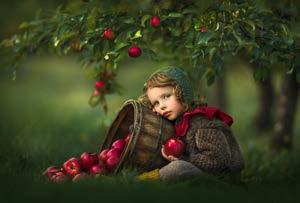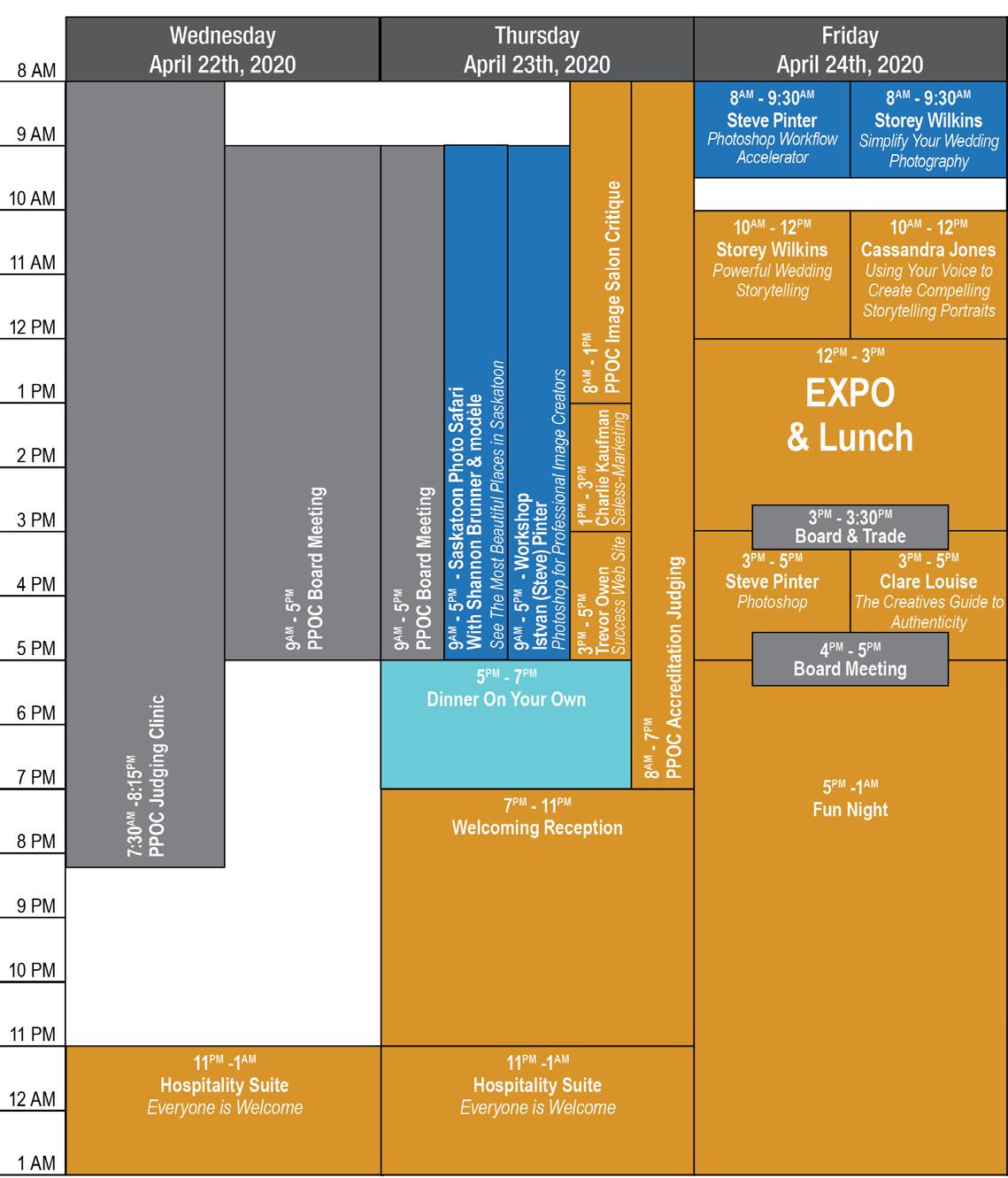
9 minute read
Safety and Creativity in Newborn Photography
By Melanie East
ONE OF MY MAIN VALUES AS A NEWBORN PHOTOGRAPHER IS SAFETY. MY CLIENTS KNOW THIS, MY PROSPECTIVE CLIENTS KNOW THIS, THE DELEGATES WHOM I TEACH KNOW THIS, AND THE NEWBORN PHOTOGRAPHY INDUSTRY IN THE UK KNOWS THIS. IT’S A POWERFUL COMPELLING EMOTION FOR ME TO KEEP BABY ONE HUNDRED PERCENT SAFE WHILE IN MY CARE. EVERY TIME I AM ENTRUSTED TO POSE AND PHOTOGRAPH A NEWBORN BABY IT IS A COMPLETE HONOUR AND PRIVILEGE, NOT ONLY TO PHOTOGRAPH BUT TO DO SO IN THE SAFEST MANNER POSSIBLE. WITH THAT IN MIND, MY WORKFLOW IS ONE HUNDRED PERCENT RISK-FREE.
Advertisement
When you work safely and you extoll the virtues of working safely, it builds a relationship of trust between you and your client. It enables the parents to sit back and watch you at work knowing that their baby is in the best care possible. It provides a calm and soothing environment where the client feels cherished and reassured, knowing that they will receive the most beautiful creative images, without any risk whatsoever and that you have their baby’s safety as paramount importance. There are many very safe newborn photographers in the industry however there are also newborn photographers who aren’t working as safely or consciously taking the safety of their tiniest clients as seriously as they should. This can be for a variety of reasons - it may be a lack of knowledge, or it may

be they have watched videos where a photographer to whom they are looking for guidance may not be working in the safest manner. They may have unknowingly picked up poor working habits, or it may be that just because “nothing has gone wrong yet” they feel that nothing *can* go wrong. For the first part of my career, I worked as a lawyer, so it stands to reason that a legal standpoint, should something go wrong, is always in my mind. I specialised in personal injury and clinical negligence. It is in my nature to question the duty of care and what would happen if that duty was breached due to negligence, resulting in injury. Let’s take a hypothetical scenario - Let’s say the baby is in a prop, in a forward-facing pose. They are not supported and the spotter is paying attention to me rather than to the baby. Baby startles and hits their head on the side of the prop, or worse, falls out. This results in a head injury. What would, in fact, happen in the UK, is that I would have failed in my duty of care through negligence, I would have caused injury to my client, and the likelihood is that I would be sued. This would not only cause huge amounts of damage to my reputation as a business - it would also be a lifetime of regret and guilt which would never disappear.


It isn’t just my legal mind which ensures I work safely. As a newborn photographer, I also work with the parents’ thoughts and feelings at the forefront of my mind. How must they feel to see their baby manipulated into some poses and then balanced without proper thought for newborn safety? When I first started out as a newborn photographer, I felt pressure to do what everybody else was doing, the bucket poses, the forward-facing poses, the taco poses (albeit in the safest manner possible). When the baby was in a prop, or in a forward-facing pose, their little head was always supported to ensure safety. I felt, at that time, that I must create those poses and use those props because that is what all other newborn photographers were doing. As time has gone on, I have moved away from that workflow. I liaise closely with a consultant paediatrician in emergency medicine and both he, and I, believe that the safest place for baby, is on a padded surface, on their back, on the floor or on their back in a padded shallow bowl on the floor. It is, of course, vital not to stand on stools or stepladders (or in fact anything) over the baby, and to have your camera strap around your neck (or to use a hand strap). We believe a beanbag also to be safe as long as the surface area is large enough and a spotter supporting the baby’s head is used for a forward-facing pose. Beanbags should ideally not be placed on raised surfaces as if the baby was to startle and fall they would have further to fall. Why do we believe these to be the safer options? Let’s consider what could happen with the baby in a bucket balanced on a chair, with a spotter who is near but not supporting the baby. Baby could startle or sneeze and fall, and the point here is that the photographer is relying on the reflexes of the spotter. What if the spotter isn’t quick enough? What if the spotter looks away momentarily and baby startles and falls, or knocks their head, as in the hypothetical example above? This is why I believe babies’ heads should always be supported. WINTER 2020 | GALLERIE MAGAZINE | 15

I’ve been there. I’ve bought the props, I’ve posed babies on crates and beds and in buckets and baskets and all manner of props (albeit their heads were always supported). I was at one stage a complete propoholic. I know from experience when using lots of props that even when we have the baby at the forefront of our mind we are thinking how can we get this shot as quickly and safely as possible and pop baby into the next pose. And I used to really dread a very fussy baby! I know that it can be hard when parents’ eyes are boring into the back of your head. I know the pressure. I understand it. Dr. Daniel Langer is a consultant in paediatric emergency medicine. He is of the belief that babies should be photographed in the safest possible manner to negate any risk of injury. “The safest place for babies is on their back. Upright balancing in props without proper support can raise the risk of accidents and therefore injury. A head injury to a baby can be catastrophic. Babies can startle and move without warning even when asleep. The Moro (startle reflex) can be induced by sudden hyperextension of the neck, loud noise, light and even sneezing. The “froggy” pose is unnatural in position and is likely to be putting a strain on the hip joint as the hips are very flexed in this position. There is a risk that putting a baby into this pose may dislocate the hip if congenital hip dysplasia has not been picked up before the newborn photography session. There is a possible risk of occluding an airway with the froggy pose as the baby is resting their head using their hands under the chin. Even if a spotter is holding a baby’s head, and the shot is carried out as a composite, the area under the chin is soft - it is not possible for the spotter to hold the head with one hand to ensure the head is not resting on the hands. It is therefore very easy to compress a baby’s airway. As an example, when a baby comes into resus with a respiratory problem, I have seen airways completely obstructed just by having the neck flexed too far forward or by inexperienced doctors holding the airway open by placing hands on the soft part under the chin. I believe newborn photographers believe the main risk with the froggy pose to be that of the baby falling, and whereas that is a real risk, there are other possible health risks to this pose as set out above.” - Dr. Daniel Langer: Consultant in Paediatric Emergency Medicine. How, therefore, do we create images which are creative, artistic, unique and still very very safe? Here’s what I have learned and continue to learn. Babies are generally very settled on their backs. They are in the safest possible position. Using textures and materials such as wool, felt, cotton, linen, and silk enabled me to go with my flow and be as creative as I wished. Having baby simply on their back opened a creative process for me. It enabled me to create more unique images and to develop my style. It taught me that I can actually be more creative and less reliant on props. It also means that because I know the baby is very safe, my creativity flows better. The more I’ve learned, and the more I’ve focused more and more on safety above shot, the more it has made me take stock of what I’m doing. Over the last three years, my work has evolved because of this. I love the creative thought process knowing that because the baby will be on their back I don’t need to manipulate baby in any way. It has given me a much more simplified system during the actual session. It has streamlined my workflow. It no longer matters if the baby is awake or asleep and so, therefore, that anxiety of whether the baby would be fussy is removed. It’s made me create serene artwork where I’m more connected to the client and to the creative aspect. I have much more time within the session to refine my work so that it is the best it can possibly be right out of the camera. This has released more time to become more creative and my work over the last 3 years has evolved and continues to evolve as a result. I continue to grow creatively … and I love every single moment. Safety and creativity really can go together - and in my experience, it’s such a richer experience all around.

Melanie East Dr. Langer and Melanie East are working together to increase the standards of newborn safety across the industry. MELANIE EAST ©2020.
Did you know you can become a member of Canada’s oldest and most recognized professional photography association for as little as $26 monthly (plus tax) ?






Apply to join today!




1-888-643-PPOC (7762) info@ppoc.ca ppoc.ca






2020 PPOC CONVENTION SCHEDULE

POSTPONED
BECAUSE OF THE COVID-19 PANDEMIC

Available with program’s full subscription Available with additional charge
Free time








